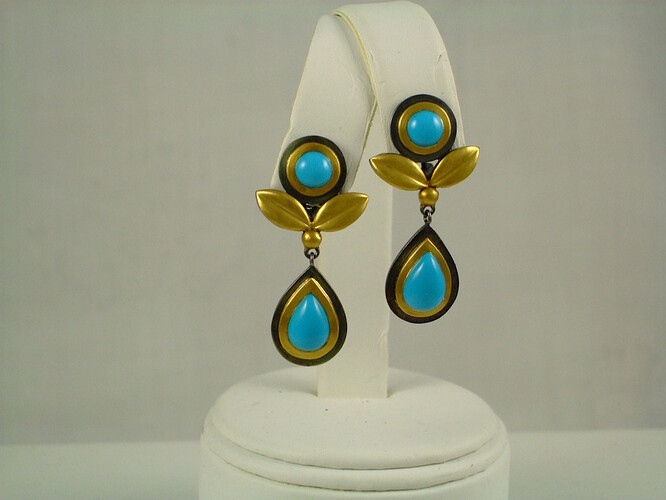Rob- How are you bezel setting? Using a rocker or burnisher or hammering?
We do heavy bezels all the time out of various metals. We just set them
with a chasing hammer and a setting punch. . Attached see a shot of a pair
of earrings I just made. Hammered bezels. 22kt gold and sleeping beauty
tourquoise. “But that’s 22 kt gold.” Yes but we do it all the time in gold,
silver and platinum. The trick is to bevel the outside upper edge to a 45
degree angle. That way the metal will want to move towards the stone and
not just mushroom out in both directions on the upper edge. The bezels in
the earrings were 1.5 mm thick.
About the only time I set from the bottom is if the stone is too fragile
to hammer on like the example below. In that case I made a 24 kt underbezel
that was fully annealed. I’ve done it in fine silver too for very fragile
cameos. The underbezel is so soft that it contours to the uneven bottom of
the shell cameo. After it is in place then I raise beads to hold it in
place from the back. A very old school technique.
Have fun and make lots of jewelry.
Oh, and step away from the glue son:-)
Jo Haemer
www.timothywgreen.com
2 Likes
